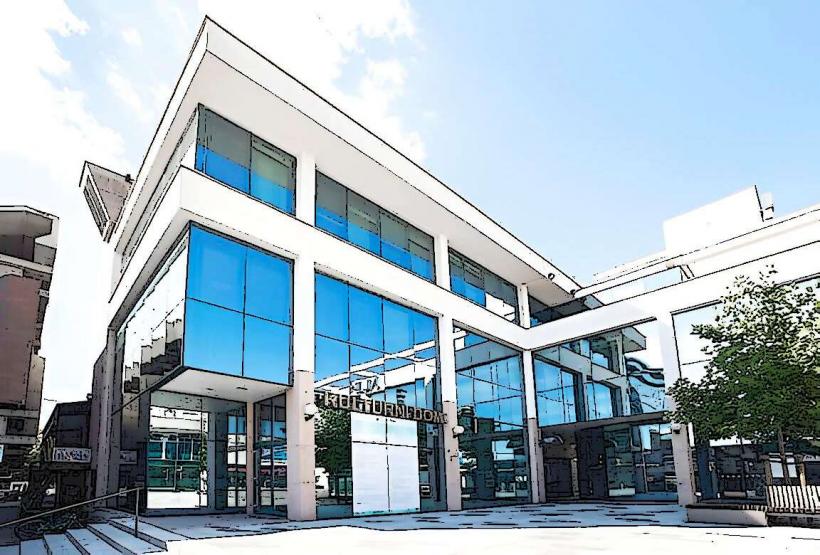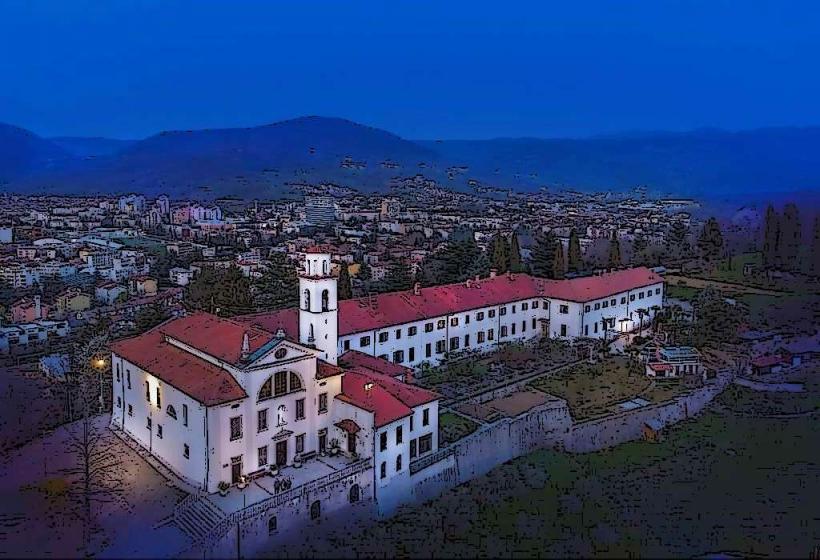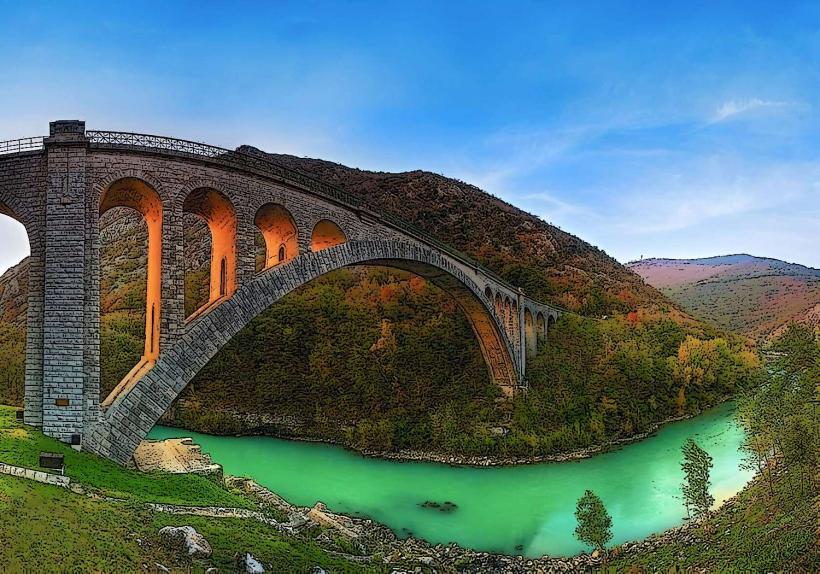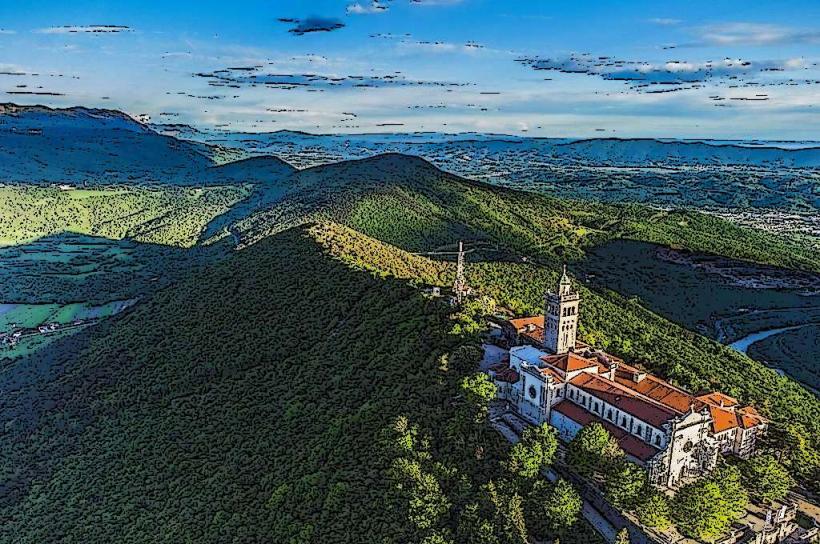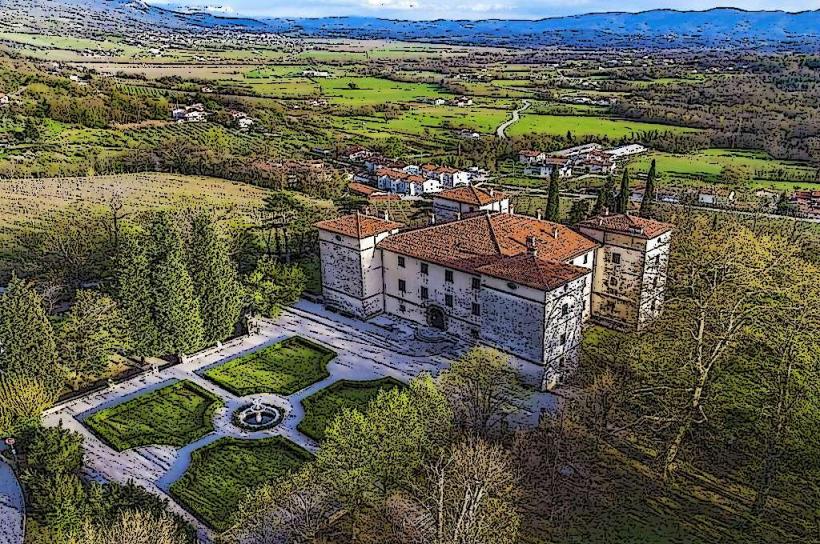Information
Landmark: National Museum of GoriziaCity: Nova Gorica
Country: Slovenia
Continent: Europe
The National Museum of Gorizia (Slovene: Nacionalni Muzej Goriške) is a prominent museum located in Nova Gorica, a town situated on the border between Slovenia and Italy. The museum serves as a key institution for preserving and showcasing the rich cultural heritage and history of the Gorizia region. With its diverse collections, the museum offers visitors a deeper understanding of the historical, artistic, and cultural developments in this area, which has been influenced by both Slovenian and Italian traditions.
History and Background
The National Museum of Gorizia was founded with the purpose of collecting, conserving, and displaying the heritage of the Gorizia region. The museum's collections span several centuries and cover various aspects of the region's history, from the Roman period to modern times.
The museum plays an important role in preserving the cultural identity of the region, especially given its position at the crossroads of various historical influences. The museum's collections reflect the region's complex past, marked by periods of Austrian, Italian, and Yugoslavian rule, as well as its ethnic diversity.
Museum Collections
The museum's exhibits are housed in a number of historical buildings in the Gorizia area, and its collections are divided into several thematic sections:
Archaeological Collections:
- One of the core sections of the museum focuses on archaeology. The collection includes a wide range of artifacts from the Roman, Medieval, and Modern periods. These items shed light on the ancient civilizations that inhabited the region, such as the Celts and Romans, and their influence on the local culture.
- Highlights include Roman sculptures, coins, pottery, tools, and mosaics, many of which were discovered during excavations in and around Nova Gorica and Gorizia.
- The Roman era is particularly well-represented, with many items linked to the Roman settlement of Emona and other nearby cities.
Art Collections:
- The museum’s art collection includes paintings, sculptures, and decorative arts that reflect the region's artistic evolution from the Middle Ages to the Modern era. The collection spans various artistic styles, including Renaissance, Baroque, Neoclassical, and Modern art.
- Among the most notable works are those from local artists, as well as pieces from the broader European tradition. The museum offers insight into the aesthetic developments that shaped the cultural life of the region.
- The Baroque art section includes works related to the historical period when the region was heavily influenced by the Habsburg Monarchy, with many pieces showcasing the religious art produced for local churches and monasteries.
Ethnographic Collections:
- The museum houses a rich collection of ethnographic artifacts that explore the traditional life of the people in the region. This includes items related to local crafts, textiles, and household objects, reflecting the cultural diversity and historical development of the region’s population.
- There are also collections of folk costumes, tools, and other objects that give insight into the everyday life of rural communities in the area, particularly during the 19th and early 20th centuries.
Historical and Military Exhibits:
- The museum also focuses on the military history of the region, particularly the First World War and the border conflicts that have shaped the region’s modern political boundaries. The collection includes military uniforms, weapons, maps, and photographs, highlighting the strategic importance of the area during the Austrian and Italian periods.
- The exhibits provide insight into the ethnic tensions and military conflicts that have historically marked the relationship between the Slovene and Italian populations in the region.
Natural History Collection:
- The museum’s natural history section offers a glimpse into the geography and biodiversity of the Gorizia region. It features a range of botanical, zoological, and geological exhibits, showcasing the natural beauty of the area, from its mountain ranges to the Soča River.
Temporary Exhibitions:
- In addition to its permanent collections, the National Museum of Gorizia hosts a variety of temporary exhibitions throughout the year. These exhibitions focus on diverse themes, such as contemporary art, photography, and regional history. Special exhibits are often created in collaboration with other museums and institutions.
Key Exhibits and Highlights
Roman Antiquities:
- The museum has a significant collection of Roman artifacts that highlight the importance of the region during the Roman Empire. One of the key items is a Roman tombstone from the 1st century AD, as well as numerous Roman coins, which offer a glimpse into the economic life of the time.
- Roman ceramics and tools are displayed alongside ancient mosaics that depict scenes from daily life.
World War I Exhibits:
- Given the region's role in World War I, one of the key focuses of the museum is on the frontlines and military operations that took place along the Isonzo River (near the present-day border between Slovenia and Italy). Items from the Battle of the Isonzo, a series of 12 battles fought between Austrian and Italian forces, are displayed.
Baroque Art:
- The museum's Baroque art collection is another important highlight. The collection includes both religious and secular art, reflecting the Habsburg influence in the region. Paintings of saints, as well as sculptures and altarpieces, reflect the religious devotion of the time.
- The frescoes and paintings on display give visitors an understanding of the artistic transformation that occurred in the region during the 17th and 18th centuries.
Folk Culture:
- The ethnographic exhibits highlight the folk culture of the Gorizia region, featuring displays on traditional costumes, craftsmanship, and agricultural practices. The exhibits showcase the rural heritage of the area and highlight the importance of customs and rituals that have been preserved through the centuries.
Visiting the Museum
Location and Accessibility:
- The National Museum of Gorizia is located in the heart of Nova Gorica, Slovenia, and is easily accessible by public transport or car. It is situated near the Italian border, making it a convenient stop for visitors exploring both Slovenia and Italy.
- The museum’s main building is centrally located, but additional museum locations in the surrounding area might require a short drive.
Opening Hours and Admission:
- The museum is generally open to visitors year-round, with varying hours depending on the season. It is advisable to check the official website or contact the museum for the most up-to-date opening hours.
- Admission fees may apply, with discounts available for students, seniors, and groups. Entrance is usually free on special national holidays or museum days.
Educational Programs and Tours:
- The museum offers guided tours for both individual visitors and groups, providing in-depth information about the exhibits and the history of the region.
- Educational programs are available for school groups, focusing on various aspects of Slovenian and European history, as well as the cultural heritage of the Gorizia region.
Why Visit the National Museum of Gorizia?
The National Museum of Gorizia offers a fascinating journey through the history and culture of one of Slovenia's most historically rich regions. Whether you're interested in ancient history, art, military history, or ethnographic heritage, the museum provides an engaging and informative experience. It’s an ideal destination for anyone wishing to understand the cultural identity and historical significance of the Gorizia region in a broader European context.

